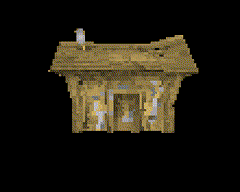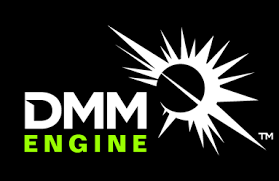
Computer animation is the process used for digitally generating moving images. The more general term computer-generated imagery (CGI) encompasses both still images and moving images, while computer animation only refers to moving images. Modern computer animation usually uses 3D computer graphics.
Wētā FX, formerly known as Weta Digital, is a New Zealand-based digital visual effects and animation company based in Miramar, Wellington. It was founded by Peter Jackson, Richard Taylor, and Jamie Selkirk in 1993 to produce the digital special effects for Heavenly Creatures. The company went on to produce some of the highest-grossing films ever made, such as the Lord of the Rings trilogy, Avatar, and Avatar: The Way of Water. Considered one of the most influential film companies of the 21st century, Wētā FX has won several Academy Awards and BAFTAs. The company is named after the New Zealand wētā, one of the world's largest insects, which was historically featured in the company logo.

Live action is a form of cinematography or videography that uses photography instead of animation. Some works combine live action with animation to create a live-action animated feature film. Live action is used to define film, video games or similar visual media. Photorealistic animation, particularly modern computer animation, is sometimes erroneously described as "live action", as in the case of some media reports about Disney's remake of the traditionally animated The Lion King from 1994. According to the Cambridge English Dictionary, live action involves "real people or animals, not models, or images that are drawn, or produced by computer".
Visual effects is the process by which imagery is created or manipulated outside the context of a live-action shot in filmmaking and video production. The integration of live-action footage and other live-action footage or CGI elements to create realistic imagery is called VFX.
The Computer Animation Production System (CAPS) was a proprietary collection of software, scanning camera systems, servers, networked computer workstations, and custom desks developed by The Walt Disney Company and Pixar in the late 1980s. Although outmoded by the mid-2000s, it succeeded in reducing labor costs for ink and paint and post-production processes of traditionally animated feature films produced by Walt Disney Animation Studios (WDAS). It also provided an entirely new palette of digital tools to the animation filmmakers.

Software rendering is the process of generating an image from a model by means of computer software. In the context of computer graphics rendering, software rendering refers to a rendering process that is not dependent upon graphics hardware ASICs, such as a graphics card. The rendering takes place entirely in the CPU. Rendering everything with the (general-purpose) CPU has the main advantage that it is not restricted to the (limited) capabilities of graphics hardware, but the disadvantage is that more transistors are needed to obtain the same speed.
PowerAnimator and Animator, also referred to simply as "Alias", the precursor to what is now Maya and StudioTools, is a highly integrated industrial 3D modeling, animation, and visual effects suite. It had a relatively long track record, starting with Technological Threat in 1988 and ending in Pokémon: The Movie 2000 in 1999. PowerAnimator ran natively on MIPS-based SGI IRIX and IBM AIX systems.

Virtual cinematography is the set of cinematographic techniques performed in a computer graphics environment. It includes a wide variety of subjects like photographing real objects, often with stereo or multi-camera setup, for the purpose of recreating them as three-dimensional objects and algorithms for the automated creation of real and simulated camera angles. Virtual cinematography can be used to shoot scenes from otherwise impossible camera angles, create the photography of animated films, and manipulate the appearance of computer-generated effects.
Filmsite is a film-review website established in 1996 by senior editor and film critic-historian Tim Dirks, and continues to be managed and edited by him for over two decades.
Chris Landreth is an American animator working in Canada, best known for his work on the 2004 film Ryan. He has made many CGI animated films since the mid-1990s, including The End, Bingo, The Listener, Caustic Sky: A Portrait of Regional Acid Deposition, and Data Driven The Story Of Franz K.
Foundation Imaging, Inc. was a CGI visual effects studio, computer animation studio, and post-production editing facility.

3D computer graphics, sometimes called CGI, 3-D-CGI or three-dimensional computer graphics, are graphics that use a three-dimensional representation of geometric data that is stored in the computer for the purposes of performing calculations and rendering digital images, usually 2D images but sometimes 3D images. The resulting images may be stored for viewing later or displayed in real time.

Digital Molecular Matter (DMM) is a proprietary middleware physics engine developed by Pixelux for generating realistic destruction and deformation effects. The offline version can support high-resolution simulations for use in film special effects. The real-time version is designed for video games, and other simulation needs by attempting to simulate physical real-world systems. Unlike traditional real-time simulation engines, which tend to be based on rigid body kinematics, the use of finite element analysis (FEA) allows DMM to simulate a large set of physical properties. Developers can assign physical properties to a given object or portion of an object, which allow the object to behave as it would in the real world. In addition, the properties of objects or parts of objects can be changed at runtime, allowing for additional interesting effects.

Computer graphics deals with generating images and art with the aid of computers. Computer graphics is a core technology in digital photography, film, video games, digital art, cell phone and computer displays, and many specialized applications. A great deal of specialized hardware and software has been developed, with the displays of most devices being driven by computer graphics hardware. It is a vast and recently developed area of computer science. The phrase was coined in 1960 by computer graphics researchers Verne Hudson and William Fetter of Boeing. It is often abbreviated as CG, or typically in the context of film as computer generated imagery (CGI). The non-artistic aspects of computer graphics are the subject of computer science research.
The following is a list of the MTV Movie Award winners and nominees for Best Action Sequence. This award was last given out in 2005.
The history of computer animation began as early as the 1940s and 1950s, when people began to experiment with computer graphics – most notably by John Whitney. It was only by the early 1960s when digital computers had become widely established, that new avenues for innovative computer graphics blossomed. Initially, uses were mainly for scientific, engineering and other research purposes, but artistic experimentation began to make its appearance by the mid-1960s – most notably by Dr. Thomas Calvert. By the mid-1970s, many such efforts were beginning to enter into public media. Much computer graphics at this time involved 2-D imagery, though increasingly as computer power improved, efforts to achieve 3-D realism became the emphasis. By the late 1980s, photo-realistic 3-D was beginning to appear in film movies, and by mid-1990s had developed to the point where 3-D animation could be used for entire feature film production.

Nickelodeon Digital, often shortened to Nick Digital and originally known as Nickelodeon Creative Labs, is an American animation studio based in New York City which opened in 1994. It is a division of Nickelodeon Animation Studio. Nickelodeon Digital produces some of Nickelodeon's animated series and creates digital content and motion graphics for the Nickelodeon Group. The company's Burbank, California branch creates CGI and visual effects for Nickelodeon's animated series.

Computer-generated imagery (CGI) is a specific-technology or application of computer graphics for creating or improving images in art, printed media, simulators, videos and video games. These images are either static or dynamic. CGI both refers to 2D computer graphics and 3D computer graphics with the purpose of designing characters, virtual worlds, or scenes and special effects. The application of CGI for creating/improving animations is called computer animation, or CGI animation.

Stephen Rosenbaum is an American visual effects artist and supervisor, and has worked on numerous movie, tv and music productions, including six that have won Academy Awards. He has been nominated three times for an Academy Award and two times for a BAFTA Award. He has won both awards twice for his contributions on Forrest Gump and Avatar, and has played artist and supervisor roles on such pioneering films as Jurassic Park, Terminator 2: Judgment Day, The Abyss, X2: X-Men United, Death Becomes Her, Contact and The Perfect Storm.







